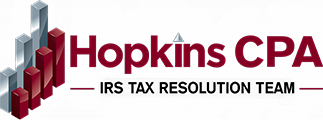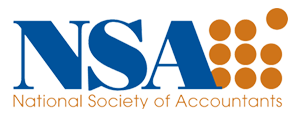Are you getting close to retirement age but not making the most of your savings? Many high-income earners are unaware of the powerful strategies available to them through Backdoor Roth IRAs and Mega-Backdoor Roth 401(k) contributions. These methods can significantly increase your tax-advantaged savings, providing substantial benefits as you plan for the future.
This guide will help you unlock the potential to save far more for your retirement. Let’s explore how these strategies can transform your financial planning and ensure you make the most of your earnings.
At Hopkins CPA, we not only guide you through these options but also offer comprehensive tax preparation services for both individuals and businesses in Texas and beyond, ensuring that every financial decision aligns with your broader financial health.
What is a Roth IRA?
A Roth IRA is a special type of retirement account where you pay taxes on money going into your account, and then all future withdrawals are tax-free. This is particularly advantageous for those who expect to be in a higher tax bracket in the future, as they can avoid higher taxes on their retirement funds.
For 2024, the contribution limit is $7,000 under age 50. The catch-up contribution limit for individuals aged 50 and over remains $1,000, so the total is $8,000 for that age group in 2024.
Benefits of Roth IRA:
- Tax-Free Growth: The money in your Roth IRA grows tax-free over the years.
- Tax-Free Withdrawals: You can withdraw your contributions tax-free and penalty-free at any time. Additionally, after age 59½ and once the account has been open for five years, all withdrawals, including earnings, are tax-free.
- No Required Minimum Distributions (RMDs): Unlike other retirement accounts, you are not required to withdraw money at a certain age, allowing your investments to continue growing if you don’t need them.
What is a Backdoor Roth IRA?
People who earn a lot of income to be eligible for direct Roth IRA contributions use a backdoor Roth IRA. Instead, they convert their traditional IRA into a Roth IRA.
When you transfer money from a traditional IRA to a Roth IRA using the backdoor method, you have to pay taxes on any funds that haven’t been taxed before. If your traditional IRA was funded only with tax-deductible contributions, you’ll owe taxes on the entire amount you transfer.
A Roth IRA lets you save money for retirement by putting after-tax dollars into an account. This means you’ve already paid taxes on the money you contribute. Generally, you won’t owe taxes when you withdraw money from a Roth IRA, as long as you follow the rules.
How to Create a Backdoor Roth IRA?
Creating a Backdoor Roth IRA can be done in one of three ways:
- Contribute to a Traditional IRA: First, deposit money into an existing traditional IRA, then transfer those funds to a Roth IRA. Alternatively, you can transfer funds directly from your traditional IRA to a Roth IRA in any amount you choose, even exceeding the annual contribution limit.
- Convert a Traditional IRA: You have the option to convert the entirety of your traditional IRA into a Roth IRA.
- Use a Company 401(k) Plan: If your employer’s 401(k) plan permits, you can convert your 401(k) into a Roth IRA.
For assistance with the process, the custodial bank or brokerage managing your IRA can provide guidance. If your retirement planning services are managed by your employer, contact the financial services firm overseeing it to find out if this option is available to you.
Tax Implications of a Backdoor Roth IRA
When considering a Backdoor Roth IRA, it’s important to understand the tax implications. This strategy may affect your individual tax preparation, particularly if you have unfiled tax returns. Let’s get this into detail:
Regular IRA to Roth IRA Transfer
When you move money from a regular IRA to a Roth IRA, you have to pay taxes on the amount you move. If you’ve already claimed a tax deduction on the money you put into your IRA, you’ll have to pay taxes on that amount when you convert it to a Roth IRA. Plus, you’ll owe taxes on any earnings your IRA made.
After-Tax Contributions
If you’ve contributed money to your IRA after paying taxes on it (meaning you didn’t get a tax deduction for it), you won’t owe taxes when you move that money to a Roth IRA.
Taxation on Converted Funds
However, if most of the money in your IRA came from tax-deductible contributions and has grown over time, you’ll likely owe taxes when you convert it to a Roth IRA. This could push you into a higher tax bracket for the year. However, there’s a rule to make sure you don’t get taxed twice on the money you’ve already paid taxes on.
Waiting Period for Access
Also, when you put money into a Roth IRA through this Backdoor method, it’s considered a conversion, not a regular contribution. This means you have to wait five years before you can take out the money without penalties if you’re under 59½.
Bypassing Income and Contribution Limits
The good thing about a Backdoor Roth IRA is that you can bypass the income and contribution limits that apply to regular Roth IRAs. These limits say you can’t contribute to a Roth IRA if your income is above a certain amount, but with the Backdoor method, those limits don’t apply.
Step-by-Step Guide to Executing a Backdoor Roth IRA
Understanding how to set up a Backdoor Roth IRA is crucial if you earn too much to contribute directly to a Roth IRA. Follow this step-by-step guide to make sure you’re maximizing your retirement savings effectively.
- Open or Use an Existing Traditional IRA: If you don’t already have one, open a traditional IRA through a financial institution. If you already have an existing IRA, you can use that.
- Make a Non-Deductible Contribution: Contribute to your traditional IRA. Remember, the contribution is non-deductible due to income limits that prevent direct Roth IRA contributions.
- Convert to a Roth IRA: Convert the entire balance of your traditional IRA to a Roth IRA as soon as possible to minimize any earnings that could be taxed upon conversion.
- Report the Conversion: Use IRS Form 8606 to report the non-deductible contribution to your traditional IRA and the subsequent conversion to a Roth IRA during your annual tax filing.
- Handle Tax Implications: Be aware that while the conversion principle won’t be taxed again, any earnings generated from the time of contribution to the conversion will be subject to tax.
What is a Roth 401(k)?
A Roth 401(k) is a type of employer-sponsored retirement plan that allows you to contribute after-tax money. Unlike a Roth IRA, which is an individual retirement account that you set up on your own, a Roth 401(k) is offered through your employer.
The money you put into a Roth 401(k) grows tax-free, and withdrawals made after retirement are also tax-free, provided certain conditions are met.
The contribution limit is $23,000 in 2024, with a catch-up contribution of $7,500 for those aged 50 and over, totaling $30,500.
Benefits of a Roth 401(K)
Exploring the advantages of a Roth 401(k) can reveal how this retirement plan might fit into your financial strategy. Here’s why choosing a Roth 401(k) might be a smart decision for your financial future:
- Tax-Free Withdrawals: You pay taxes on your contributions upfront, so you can withdraw them tax-free after retirement, as long as you meet certain conditions. This is particularly beneficial if you expect higher taxes in the future.
- Employer Match: Some employers will match your contributions, boosting your retirement savings, although these matches are taxed upon withdrawal.
- No Income Limits: Unlike a Roth IRA, there are no income limits to contributing to a Roth 401(k), making it available to high earners.
- Convenient Contributions: Contributions are automatically deducted from your paycheck, making it easy to save consistently.
- Access to Funds: Roth 401(k) plans may allow loans and withdrawals for emergencies, which is not typically possible with IRAs.
- Avoiding RMDs: While Roth 401(k)s usually have required minimum distributions starting at age 72, you can roll your funds into a Roth IRA to avoid these distributions and let your savings continue to grow.
What is Mega Backdoor Roth 401(k)?
A Mega Backdoor Roth 401(k) is an advanced strategy used to save significantly more money in a Roth account, which allows for tax-free growth and withdrawals. This strategy involves making large after-tax contributions to a traditional 401(k) and then converting these to a Roth 401(k) or Roth IRA, thus bypassing the usual contribution limits of a Roth IRA.
The purpose of a Mega Backdoor Roth 401(k) is to enable individuals to increase their retirement savings in a tax-advantaged account beyond the standard 401(k) and IRA contribution limits. This is especially useful for high earners who want to maximize their tax-free income in retirement.
Mega Backdoor Roth Requirements
Understanding the prerequisites for a Mega Backdoor Roth can significantly enhance your retirement planning strategy. Here’s what your employer-sponsored plan needs to support to make this powerful saving tool work for you:
- Employer Plan Contributions: Your employer’s 401(k) or profit-sharing plan must accept contributions that are after-tax but not classified as Roth.
- Rollover Options: The plan should allow you to roll these contributions over into a Roth account within the plan (known as a Roth 401(k)), or it should permit in-service non-hardship withdrawals, which lets you move money while still employed without facing financial hardship.
- Accounting of Contributions: The plan must keep separate record of pre-tax and after-tax contributions and their earnings. While not a strict requirement, this separation is practically essential because the Pro-Rata Rule, which affects how taxes are calculated during rollovers, will apply otherwise. Therefore, a clear distinction between pre and post-tax contributions and earnings becomes necessary.
Note: The Pro-Rata Rule is an important tax rule that comes into play when you convert funds from a traditional IRA or 401(k) with both pre-tax and after-tax dollars to a Roth IRA. This rule helps determine the amount of the conversion that is subject to income tax.
Step-by-Step Guide to Executing a Mega Backdoor Roth 401(k)
To make the most of a Mega Backdoor Roth 401(k) and greatly increase your retirement savings, it’s important to know the steps involved. Here’s an easy guide to walk you through the process:
- Confirm Plan Eligibility and Features: Check with your HR department or plan administrator to confirm if your 401(k) allows after-tax contributions and in-service withdrawals or rollovers.
- Make After-Tax Contributions: Maximize your after-tax contributions to your 401(k) up to the allowable limit, which is considerably higher than the normal pre-tax/Roth 401(k) limits.
- Convert to Roth: Request an in-service withdrawal or direct rollover to convert these after-tax contributions to a Roth IRA or Roth 401(k). Aim to do this frequently (if possible, annually) to minimize taxes on any earnings.
- Monitor and Repeat: Continually monitor your contributions and the performance of your 401(k). Repeat the contribution and conversion process each year as allowed by your plan.
- Address Tax on Gains: If there are earnings on the after-tax contributions at the time of conversion, you’ll need to pay taxes on those earnings during the conversion year.
Difference between Backdoor Roth IRA and Mega Backdoor Roth 401 k
To make an informed choice between the Backdoor vs Mega Backdoor, it’s vital to understand the distinctions between them. Let’s explore the key differences that could influence your decision based on your financial situation and retirement planning goals:
Eligibility Criteria
This section outlines who can take advantage of each strategy based on their income levels and the features of their employer’s retirement plan.
- Backdoor Roth IRA: Anyone can use the Backdoor Roth IRA strategy, but it is especially beneficial for high-income earners who exceed the income limits for direct contributions to a Roth IRA.
- Mega Backdoor Roth 401(k): To use the 401k Mega Backdoor Roth strategy, your employer’s 401(k) plan must allow after-tax contributions. Plus, it should either use in-service withdrawals or conversions to a Roth. This feature is not universally available on all plans.
Contribution Processes and Limits
Here, we compare how much you can contribute to each account type and the rules governing these contributions, highlighting the significant differences in potential savings amounts.
- Backdoor Roth IRA: The Backdoor Roth IRA doesn’t have specific contribution limits of its own. However, for traditional and Roth IRAs combined, the annual contribution limit is $6,500 in 2023 (or $7,500 if you’re age 50 or older) and $7,000 in 2024 (or $8,000 if you’re age 50 or older). These limits apply regardless of whether you contribute directly to a Roth IRA or use the Backdoor method.
- Mega Backdoor Roth 401(k): The amount you can contribute to the Mega Backdoor Roth depends on your employer’s retirement plan. In 2024, you can contribute up to $69,000 (or $76,500 if you’re 50 or older) annually. This includes both your contributions and any contributions made by your employer. These contributions can be converted to a Roth IRA for potential tax benefits.
Tax Treatment and Benefits
This explains how each strategy handles taxes on contributions and conversions, focusing on immediate and long-term tax implications for your retirement savings.
- Backdoor Roth IRA: Converting funds from a traditional IRA to a Roth IRA involves paying taxes on any pre-tax dollars and earnings. If your traditional IRA contributions were deductible, you owe taxes on the entire amount converted.
- Mega Backdoor Roth 401(k): Contributions are made with after-tax dollars, so there’s typically no tax due on the principal at the time of conversion to a Roth IRA. Taxes may be owed on any investment gains that occurred before the conversion if they are converted at the same time as the after-tax contributions.
Access to Funds
This section details when and how you can access the funds from each account, emphasizing the conditions under which withdrawals are permitted and any penalties that might apply.
- Backdoor Roth IRA: Funds converted to a Roth IRA can be withdrawn five years after the conversion date without penalties, provided the account holder is over 59 ½ years old.
- Mega Backdoor Roth 401(k): Similar rules apply, but the initial contributions (being after-tax) may be accessed earlier under certain conditions without penalty, depending on the plan’s rules.
Impact on Retirement Planning
We discuss how each strategy can influence your financial situation upon retirement, focusing on tax-free income and the ability to manage future tax brackets.
- Backdoor Roth IRA: Allows individuals to strategically plan for tax-free income in retirement, helping manage tax brackets in retirement years.
- Mega Backdoor Roth 401(k): Offers a substantial boost to retirement savings through higher contribution limits, greatly increasing the tax-free income available in retirement.
Suitability Based on Income Levels
This explores which strategy might be more beneficial depending on your income level, emphasizing suitability for high earners versus those with lower income thresholds.
- Backdoor Roth IRA: This is most beneficial for individuals who are above the income threshold for direct Roth IRA contributions but still want the benefits of a Roth.
- Mega Backdoor Roth 401(k): Best suited for very high earners who can maximize the higher contribution limits and who have access to the required plan features.
Pros and Cons of Backdoor Roth IRA and Mega Backdoor Roth
To help you decide which retirement strategy is right for you, let’s explore the drawbacks and advantages of Backdoor Roth and the Mega Backdoor Roth 401(k). Each has unique features that may align differently with your financial planning goals.
Backdoor Roth IRA
Pros:
- Get around income limits: With a Backdoor Roth, you can contribute to a Roth IRA even if your income would normally prevent you from doing so.
- Tax benefits: Money in a Roth IRA can be taken out tax-free in retirement if the account has been open for at least five years.
- No required minimum distributions (RMDs): There are no mandatory withdrawals from Roth IRAs, so you can take out your money whenever you want.
Cons:
- Tax consequences: There might be state, local, or federal taxes that apply to Backdoor Roth conversions.
- Higher-income brackets: Moving money from a pre-tax account to an after-tax one could push you into a higher-income tax bracket.
- Five-year rule: Generally, money needs to stay in a Roth IRA for at least five years before you can withdraw it without penalties or taxes.
Mega Backdoor Roth
Pros:
- Larger contributions: This strategy allows you to contribute much more than usual to a Roth IRA (up to $43,500 in 2023).
- Tax-free growth and withdrawals: Once the money is in the Roth account, you can take it out tax-free in retirement.
- Minimizes taxes: Rolling funds into a Roth plan soon after the contribution can help reduce the taxes you would otherwise pay on gains.
Cons:
- Limited availability: Your employer’s retirement plan must allow after-tax contributions to a 401(k), along with either in-service distributions or conversions, to use this strategy.
- Tax implications: You may still owe taxes on the money you convert from a traditional 401(k) to a Roth account.
- Five-year rule: Similar to the Backdoor Roth, money typically needs to sit in a Roth account for at least five years before you can withdraw it without penalties or taxes.
By understanding these pros and cons, you now have an idea of what you have to choose, to better understand between a Backdoor Roth IRA and a Mega Backdoor 401k read the below section, and have the right options for you.
How to Choose the Right Strategy for you?
Choosing between a Backdoor Roth IRA and a Mega Backdoor Roth 401(k) involves considering several key factors to determine which strategy aligns best with your financial goals and circumstances:
Financial Assessment
- Income Levels: Review whether your income exceeds the limits for a direct Roth IRA contribution, making a Backdoor Roth IRA necessary. Alternatively, if your earnings and savings potential are much higher, and you seek to maximize your retirement contributions, the Mega Backdoor Roth 401(k) might be more appropriate due to its higher contribution capabilities.
- Retirement Goals: Evaluate your expected financial needs for retirement. A Mega Backdoor Roth 401(k) could be more beneficial if you anticipate needing substantial funds, thanks to its higher contribution limits that can significantly bolster your tax-free retirement savings.
Tax Considerations
- Current vs. Future Tax Rates: Think about your current tax rate compared to what you expect it to be in retirement. If you believe your tax rate will be higher in the future, contributing to Roth accounts now could save you on taxes later.
- Conversion Taxes: Remember that converting to a Roth via the Backdoor Roth IRA could incur immediate taxes on previously untaxed contributions. In contrast, contributions to a Mega Backdoor Roth are typically after-tax, affecting only the taxes on earnings if converted.
Plan Features and Accessibility
- Availability of Plan Options: Ensure that your employer’s 401K Backdoor plan supports the necessary features for a Mega Backdoor Roth IRA, such as after-tax contributions and in-service withdrawals. The Backdoor Roth IRA generally requires less from employer plans and can be set up independently.
- Ease of Implementation: Consider how simple or complex each strategy is to execute. The Backdoor Roth IRA generally involves fewer steps and less reliance on specific employer plan features, making it more straightforward to manage.
Personal Preferences and Complexity
- Investment Simplicity: If you prefer an uncomplicated approach to managing your investments, the Backdoor Roth IRA may be preferable due to its straightforward nature.
- Desire for Maximum Contributions: If maximizing your retirement savings is a priority and your plan allows it, the Mega Backdoor Roth’s higher limits provide a significant advantage.
Bottom line
The Backdoor Roth and the Mega Backdoor Roth are both effective ways to bypass the usual income limits of a Roth IRA. The Backdoor Roth IRA is ideal for moving money from a traditional account to a Roth, while the Mega Backdoor Roth is better for high earners who wish to contribute beyond the standard limit.
Consider working with a financial advisor before committing to one or the other, so that you can fully understand the tax implications and ensure that the strategy aligns with your overall financial goals.
Other than offering guidance on retirement strategies, Hopkins CPA Firm also provides a range of other services. These include assistance with unfiled tax returns, negotiating offers in compromise with the IRS, securing innocent spouse relief, penalty abatement, and managing payroll tax returns. These comprehensive services help you navigate the complexities of the tax system efficiently.










